THE ULTIMATE POKER BLUFF GUIDE
A bluff in poker is when you make a bet or raise in an attempt to make your opponent(s) fold a better hand than you, helping award you the pot by default in the process. While players have the ability to make a bluff at any time during a game, the best players always bluff at the most opportune times – in other words, when they think their opponent(s) will fold the most often.
Knowing when to bluff calls upon a specific, learnable bluffing skillset that will help players maximize their expected value (EV) and profit the most through bluffing. The aim of this dense guide is to properly arm you with all of the knowledge required in order to master this art form of bluffing!
Table of Contents
THE THEORY OF THE POKER BLUFF
Bluffing is an element that absolutely MUST be incorporated into your poker game, if your wish to be a solid player. Why, you ask? Let’s take two examples to help illuminate the answer to this question.
The Nit: Imagine a player who’s a super-nit and only bets when they have a good hand. In this case, it becomes pretty easy to play against them, for if they show any sign of aggression, you’ll know that you’re likely beat and can make an easy fold. The reason that nits are easy to play against is because they essentially turn their hand face-up when they show any ounce of aggression, allowing their opponents to play near-perfectly against them!
The Maniac: Now, imagine the flipside where you have a player who’s a maniac and shows über amounts of aggression and bluffs too much. Against this player, it’s easy to exploit their tendencies by calling down lighter (with a wider range of value hands) versus them and/or letting them hang themselves by allowing them to be the ones to put more money in the pot when you have a strong hand.
Therefore, as you can see, including the art of bluffing just the right amount into your game is what’ll transcend you into being a very tough player to play against.
To execute a bluff well, timing is the most important key element! Some simple questions to ask yourself in deciding on whether or not a bluff might be effective in a certain spot include the following:
- Does my opponent have a weak or capped range?
- Has my opponent shown any physical or timing tells that might help dictate the strength of their hand?
- Am I balancing my bluffs here with enough value hands?
- Is my opponent a calling station? Is he more than likely to call me down anyway?
- How is my table image? Will my opponents likely give me respect?
- Does my betting story throughout the hand make sense (i.e. for me having a strong hand)?
- Did I size my bets street-by-street correctly (i.e. for reasons of storytelling, Stack to Pot Ratio, risking the least amount of money with bluffing while retaining the highest amount of fold equity, etc.)?
As you can see, there are many considerations you should consider in deciding when might be an opportune time to bluff or not.
Read the full "The Theory and Mechanics of Bluffing in Poker" article >>

HOW TO BLUFF IN POKER
Bluffing requires you to be an aggressive player, and usually it’s the aggressive players that are winning players. (This is because they can win pots in one of two ways: (1) They have the best hand at showdown, or (2) everyone else folds to their bet or raise and they pick up the pot uncontested.)
That said, it’s not about using blind aggression, but rather that which is carefully selected and used at just the right moment. Here are 9 things you can consider before a hand even begins on whether or not you should even potentially consider bluffing at all (and sometimes at what frequency) if the next hand merits it:
- Gameplay Dynamics at Your Table: Having the right dynamics at your table (player types, position, chip stacks, etc.) is going to make it easier to determine at which frequency you should bluff, if you’re using an exploitative
- Stakes: It’s harder to bluff at the micro stakes because players here are generally more “call-happy”, and you can profit here using an exploitative approach. As you move up and start requiring a bit more balance than normal in your ranges, bluffing should become a more commonly incorporated part of your poker gameplay.
- Number of Players in the Hand: Simply put, the more players there are in a hand, the less likely you should be to bluff because of the likelihood that someone has at least a piece of it.
- Your Image: If you’ve been overly aggressive and/or caught bluffing recently, you should try to bluff less often, and value bet more, as that recent memory will be in the forefront of your opponents’ minds and might make them more inclined to call you down.
- Your Opponents’ Images and Tendencies: If your opponents always call, you should never bluff! By a similar note, those opponents who overfold are those whom you should be bluffing the most against.
- Look For Poker Tells: It’s easy to know how you should play if you know your opponent’s holding, or at the very least, the strength of their hand, as a result of a “poker tell” they may have. Always be on the lookout during a session to see if there’s anything you can pick up from the players at your table.
- Hide Your Poker Tells: Learning more about poker tells can also help arm you with the knowledge for what to look for to help you hide your own tells at the table, which can certainly help increase the success rate of your bluffs. (See “Section 7: Noticing Poker Bluffs Using Poker Tells” below.)
- Game Type: Bluffing in deepstack cash game play will require knowledge and application of different bluffing concepts than in shortstack, later-stage tournament play. Furthermore, which types of bluffs to do in each will vary to a degree, as well.
- Bankroll Considerations: Being properly bankrolled is going to help you feel comfortable with following-through with a well-timed bluff at the tables, instead of potentially shying away from pulling the trigger from fear of loss.
Read the full "How To Bluff in Poker" article >>
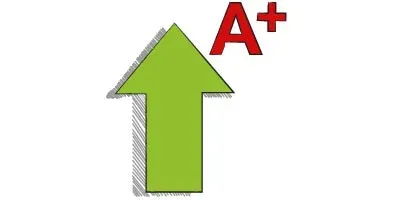
POKER BLUFFING STRATEGY - BALANCING YOUR BLUFFS
When choosing whether or not to bet, from a simplified standpoint, it should be either to gain value from a worse hand (i.e. value) and/or to deny equity realization from your opponent’s hand and/or make a better hand fold (ie. bluff).
When betting, you must choose sizings and frequencies that take all of the possible hands in your range into account. In doing so you can choose which hands will be the best bluff candidates (something we’ll elaborate upon momentarily) and which ones you can include for value.
There are two primary types of hand ranges of which players usually choose from when constructing their ranges and deciding how much to bet:
- Polarised Range: Includes very strong made hands or nothing (bluffs)
- Linear / Merged Range: Includes very strong hands, some medium-strength hands, too, and some bluffs.
In general, polarised ranges will have a much higher bet size than merged ranges. (Perhaps you’ve heard of when someone overbets the river of how he is very polarised, meaning he generally has the nuts or nothing.) With the higher bet sizings, you can generally include more bluffs, as well, relative to the number of value hands that you have in your range. To help illustrate why, let’s look at bluffing from a theoretical, mathematical, and balanced standpoint.
| Remember that (often times) the most profit can be made at the poker table by using an exploitative approach, whereby you optimally counter your opponents’ tendencies in order to yield the most profit. Only when playing against tough players should you implore a more balanced approach to your playing strategies, so that regardless of what action they do, you have an appropriate number of value hands and bluffs in various parts of your range, so that they cannot exploit you. |
NOTE: This next section refers to bluffs specifically made on the river. This is because once all the community cards are out, equities of hands are fully realised, and you will either have the best hand or not. When bluffing (or semi-bluffing) on the flop and turn, equities often run much closer together, so it’s okay to bluff more during those streets than it is on the river. (We’ll elaborate more on this in “Section 6: The Art of Semi-Bluffing” below.)
By a similar note, as mentioned earlier, you’ll find that betting bigger on the river (meaning you’re often using a more polarized approach), allows you to bluff more often. If you bet $100 into a pot of $50, your opponent is having to call $100 to win $150, meaning he’s getting odds of 3 to 2 (or 1.5 to 1). This means that he has to call and win 40% of the time if he wants to show a profit, which means you should include 60% value hands and 40% bluffs in your range here.
Use the chart below to help you determine how many bluffs you should include in your river betting range depending on your bet size (and if you’re using a balanced strategy)
|
Your Bet Size |
Opponents Calling Odds: |
Value Bet % |
Bluffing % |
|---|---|---|---|
|
¼-pot |
5 to 1 |
83.4% |
17% |
|
1/3-pot |
4 to 1 |
80% |
20% |
|
½-pot |
3 to 1 |
75% |
25% |
|
2/3-pot |
2.6 to 1 |
72% |
28% |
|
3/4-pot |
2.3 to 1 |
70% |
30% |
|
Pot |
2 to 1 |
67% |
33% |
|
1.5x-Pot |
1.7 to 1 |
62% |
38% |
|
2x-Pot |
1.5 to 1 |
60% |
40% |
Read the full "Poker Bluffing Strategy" article >>
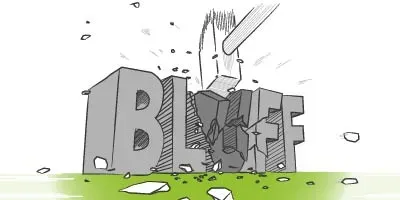
POKER BLUFFING TIPS
Here are 5 large-scale tips to keep in mind that will help further ensure the success rate of your bluffs:
- Hand-Read Your Opponents Like a Pro: It’s important to be able to gauge the strength of your opponents’ hands in order to determine whether or not a bluff will succeed. Hand-reading skills are something that can be developed and trained over time. Determine the preflop tendencies of your opponent first (by assessing how often their opening, calling, etc. – re: VPIP and PFR stats in a HUD), and then use this to help give you a starting hand range for them by position.
- Re-Select Good Bluff Hands For Every Street: Just because you bluff-raised the turn doesn’t mean you should continue firing with all of your bluffs on the river. (Then you’d be over-bluffing!) Always assess and re-assess street-by-street which hands in your range would be the best to bluff with; then finalize those candidates depending on your bet sizing and the number of value hands in your range.
- Don’t Mindlessly Attack Weakness: When villain checks-back the flop or turn and shows weakness, this doesn’t give you automatic reason to attack the following street(s) with just any two cards, as this would cause you to then be over-bluffing and likely losing money in the long-run. While exploitatively-speaking (yes!) this is a tendency of villain that can and should be countered, especially if they usually check-back with weaker holdings, but it doesn’t mean that you should donk bet the next street 100% of the time with all hands in your range.
- Exploitative First, Then Balanced: While it’s always good to be able to know how to play a solid, fundamentally sound balanced poker strategy, remember that most of the time, especially at smaller stakes games, you’re almost always going to be able to extract more value overall by simply attacking the exploitable tendencies of your opponents instead of focusing on balanced strategies.
- Choose Your Bluffing Bet Sizes Well: When you bluff, it’s important to think of how much you would bet with your value hands in the same situation. This is because you don’t want to use different bet sizings for your bluffs as your value bets, as many competent players would be able to pick up on this and then be able to exploit you!
Read the full "Poker Bluffing Tips" article >>
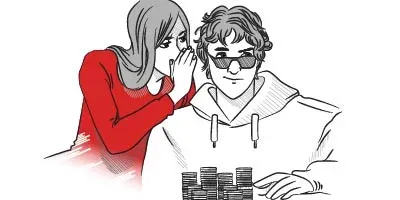
THE ART OF SEMI-BLUFF
Within the grand spectrum of bluffing is a smaller branch of the tree that’s called semi-bluffing, whereby you bet with a hand of (current) low showdown value now (on the flop or the turn) in hopes of improving to a much stronger hand (i.e. straight or flush) on future streets. The power of semi-bluffing comes in the form of (1) having a bigger pot to win, if you do improve on later streets; and (2) allowing your opponent the opportunity to fold a better hand now, subsequently denying him equity realising, and awarding you the current pot in the process.
The 4 Categories of Hands
As a basic concept, there are 4 different categories that you should be able to sort the various hands in your range into for post-flop play:
- Strong Made Hands
- Marginal Made Hands
- Draws
- Air
As an oversimplified system for deciding which hands in your range to bet, in general, you should be betting with those in Categories 1 and 3 and checking with the hands in Categories 2 and 4.
Therefore, semi-bluffing comes into effect by following this system, as we’re going to be betting our draws most of the time, which will ultimately be balanced by our strong value hands.
Recommended Frequency of Bluffing Flops and Turns
On the river, it’s easier to determine which hands to consider bluffing with, as at this point in the hand (with no cards to come), all players have realized their equity and can determine the strength of their hand. This is why it’s easier to decide on the river whether a bet is for value or as a bluff (as semi-bluffing is no longer possible). It’s also the reason why (with our river bet sizing), we can determine exactly the number of bluffs to include in our range.
However, when we’re semi-bluffing on the turn or river, we will almost always still have equity with our draws and as such, it can be difficult to know exactly how often we should be bluffing (semi-bluffing), as well as which hands are best to do it with.
As a very general guideline to follow value-to-bluff ratios for all streets of play should ideally something conform to the likes of this formula:
- Flop: 1 value hand for every 2 bluffs (semi-bluffs)
- Turn: 1 value hand for every 1 bluff (semi-bluff)
- River: 2 value hands for every 1 bluff
NOTE: As you know by now, though, that formula for the river will be true if using a pot-sized bet but will vary depending on the bet sizing used.
Which Draws to Bet With
Not all draws are created equal. If you always bet with all of your flush draws and all of your straight draw combos, you will likely be over-bluffing. Therefore, it’s important to carefully select what the best combos are in your range to bet with as a semi-bluff.
In general, the best hands to semi-bluff with on the flop and turn are going to those with very little, if any, showdown value.
- Example 1: It’s going to be better to c-bet 9s8s on AsQc2s as a flush draw than QsJs, as the QsJs already has showdown value in the form of a pair of Queens.
- Example 2: It’s better to bet K7 on 986 than it is to bet 87, as the 87 has better SDV that the K7 at this moment.
Two more instances where it may be advisable to check in situations with draws instead of betting is (1) with combo draws (i.e. straight + flush draws), depending on stack sizes, along with (2) select combos of Ace-high flush draws (again coming back to checking a good portion of the time because of the Ace-high showdown value).
For flush draws specifically, a good rule to follow is this: How would you play your hand if you didn’t have a flush draw with it? As you can see from the QsJs example above, on an Ace-high board, it’s unlikely we’d want to c-bet that flop anyway with just middle pair, so we probably shouldn’t do it either with a flush draw to go along with it.
Read the full "The Art of Semi Bluff" article >>

SPOTTING A POKER BLUFF
As mentioned previously, it’s going to be easier to know how to play against your opponents when you get a better idea as to the strength of their hand. Noticing any “tells” they may have will increase your hand-reading abilities and can significantly help you in determining if a player is weak or strong.
With that said, here are some common tells to look out for:
- Tense vs. Relaxed: If someone looks tense (ie. shoulders up, massaging their neck, etc.) and stiff, it is often an indication of a bluff. If a player is relaxed, moving (ie. legs swinging), and/or able to talk freely without hesitation, it’s often an indication of a strong hand.
- Eye Movements: The reason why many players wear sunglasses while playing at the poker table is to hide what information their eyes can unintentionally reveal about the strength of their hand.
- Pupil dilation frequently means a strong hand.
- If a player looks at his or her own chip stack after a community card is laid down, it often means strength (ie. gearing up for a bet).
- If a player continues to look at the flop after it’s dealt, it’s often an indicator of weakness (as if to wish the flop changed).
- Oppositely, if a player immediately looks away, they’re usually quite strong (as if they’re trying to appear weak by acting disinterested in the hand).
- Genuine Nervousness and Excitement: There are certain (often subconscious) actions that players have a difficult time noticing or controlling that can reveal strength or weakness.
- If you see a hard swallow after someone bets, it can often times indicate nervousness, as they very well may be bluffing.
- The same goes for if one’s hands are shaking when they bet. Contrary to popular belief about them being nervous, it’s actually usually an indication of excitement, meaning they have a strong hand.
- How They Bet: How a player places forward their bets can often times reveal the true strength of their hand.
- If they slide a large pile of chips forward (keeping them on the table in doing so), it often indicates strength, as they’re trying to not appear strong nor draw attention to themselves.
- If they make some grandiose gesture putting forward their money, they’re usually trying to appear strong but are actually weak.
- You could also notice what denomination of chips one uses for their bets. If they put out a 20 x $5 chips instead of 1 x $100 chip to make a $100 bet, they might be trying to use an intimidation factor of using more chips than otherwise in order to try and get you to fold.
- If after a player bets, they are staring you down, often times, they might be bluffing (again, trying to intimidate you).
- While there’s not necessarily a general rule you can follow regarding timing tells from one player to the next, often times, players may take different lengths of time before they bet depending on whether it’s a value bet or a bluff.
- Various players might also size their bets differently for when they’re bluffing (perhaps larger) than when they’re value betting (maybe smaller). Again, this will vary greatly from player to player, but usually can be exploited once a trend is noticed.
Always keep in mind that the above lists are general tells. What may be true for most of the population may not be true for all players.
Furthermore, by really paying attention when you’re at the poker table, you’ll be able to notice other traits and characteristics that various players have that may be indications of strength or weakness.
Read the full "How To Spot a Poker Bluff" article >>
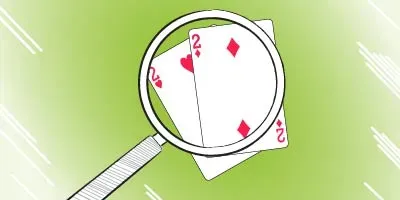
BLUFF CATCHER
This section refers to the aftermath of a poker hand where one player has bluffed, and the other player called and caught them bluffing. Having reached showdown, there’s always things that you can learn after the hand and adjust for future gameplay. For this, we’ll take a look at both (a) when you catch someone bluffing and (b) when someone else catches your bluff.
When You Call Someone’s Bluff:
- What Type of Player is Your Opponent? In live play, you’re somewhat left in the dark if a player mucks a (presumed) bluff at showdown. Online, though, even if a player mucks his or her cards, you will still be able to see their holding after the hand via the sites hand history re-player. With this information regarding their hole cards, you’ll be able to gain much information about your opponent:
- Is Your Opponent Competent? Incompetent players can be interesting to play against. This is because how they play isn’t logical and is actually somewhat random. When good players may use large river bet sizes to represent a polarized range (bluff or nuts), incompetent players may just be blasting away with 2nd or 3rd pair for no good reason. It’s important to note which players have no logical idea what they’re really doing.
- Is Your Opponent Value Betting Too Thin? Similar to the last point, this is where you’ll be able to determine betting tendencies of your opponent. If you see that they’re often betting 2nd, 3rd, or 4th pair on the river when certain betting lines are taken, you can easily take steps to exploit this tendency by calling with a wider range.
- Is Your Opponent Over-bluffing? The problem with many fish is that they do not selectively determine which hands in their range would be the best to bluff with. Instead, they can sometimes get caught over-bluffing by either betting too often with (1) air (that they should’ve just check-folded instead), or (2) hands with some showdown value that they would’ve been better to check with (as there would’ve been better candidates to bluff with).
- Can Your Opponent Bluff? If at showdown, you’ve always seen your opponent with the nuts, it’s likely that they’re incapable of bluffing. In this case, always be wary whenever seeing them bet, and make sure you’re getting good odds to continue playing throughout a hand if you’re on a draw. Furthermore, when you make the nuts, you’ll know that you should often bet for value against them, as checking would do no good if it’s not going to induce a bluff from them.
- How Does Your Opponent Continue to Play After Bluffing (Re: Tilt)? Some players will go on tilt after getting a bluff picked off. Perhaps they’ll continue being reckless in the hands immediately following. Or maybe they’ll tighten back up to try and preserve their losses. In any case, notice if such players seem to be affected by such outcomes and look to adjust accordingly.
When Someone Calls Your Bluff:
- Learn from The Hand: Did your opponent call you down weaker than expected? In retrospect, did your betting story make sense? Did you choose an appropriate hand in your range to bluff with? Mistakes can often be expensive in poker, but as long as you learn from them so that you can improve in future situations, it’s not all a lost cause.
- Don’t Tilt: If you’re someone who’s prone to tilt, quit your session early or take a break from the table. It’ll end up saving you loads of your bankroll. Additionally, in your study / improvement sessions away from the poker table, ensure that you’re taking steps to help eliminate tilt, as “time at the table = money” in poker, and you don’t want to always have to take a break from the table just so that you can calm down.
Read the full "Bluff Catcher - Learning to Catch Bluffs" article >>
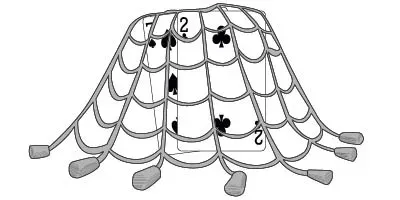
BEST POKER BLUFFS
Now that you’ve learnt how to bluff, bluffing strategy, semi-bluffing and how to become a stellar bluff catcher, it’s time to look at some pros in action. The best players in the world will bluff at every opportunity. Why? Well, not only because it showcases their skill level, but also because it is profitable. It makes them money!
Read the full "Best Poker Bluffs of All Times" article >>
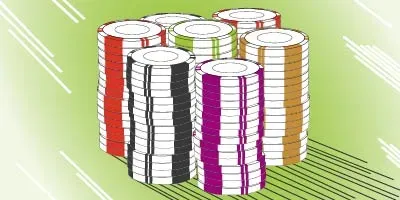
BLUFFING GUIDE SUMMERY
Bluffing is an important facet to any player’s poker game. It can not only help you win more money when executed in a timely fashion, but it can also transform you into an extremely tough player to play against, as your opponents will simply have to guess as to whether you have the goods or an air-ball.
Continue studying the concepts and principles of bluffing well beyond the end of this article. It’s the repetition of these ideas that will really help enforce the key points of bluffing into your brain, which will, in turn, take your gameplay to a whole new level when you’re able to apply it when playing.
Good luck at the felts!
